Following on from designing a microforest garden recently, it was time to realise the design! Harris led the charge, helped by forest garden interns Minoru and Kelly, as well as all the students of the forest garden design course.
This micro forest garden was to be established on a very compacted piece of ground that had formerly been a road. Yikes. As with many plantings on this crazy patch of land of ours (read: everywhere except the creekflat), it was time to get out the crowbar to dig the holes… but it all turned out splendidly!
The particular parameters of this site include that, in a heavy rain event, there is a large amount of surface runoff due to the compaction uphill. Harris decided to make the most of this factor by designing a system that should work along the lines of flood irrigation in such an event, making the most of the rain by storing it in the paths (and in the beds, once they’re established).
Harris had encountered designs like this in Chile where he’s recently been teaching permaculture (and learning all the while), on sites with poor soil and erratic rainfall. So we’re giving it a go. Haven’t had a big (or even medium sized) rain event since this install but i’ll let you know how it goes.
The design centers around 3 green gage plums, which were chosen for their hardiness, and also because this might not be a permanent planting. The boundaries of Milkwood have just been edited slightly (thanks to Nick’s parents generosity) to include the woolshed as part of Milkwood proper.
This boundary adjustment means in turn that we will now be incorporating the woolshed area into our whole farm design, and the design around the woolshed may or may not include a garden where the micro forest garden is long term.
But who knows what the future will bring. So we’re planting it now, and we’ll see what happens later. And that’s the long-winded explanation of why we didn’t put valuable semi-established climax trees as the centerpieces of this design.
Back to the install.
To get the forest garden through it’s first summer, Harris added irrigation loops to each bed, and 3 separate joins for a normal hose. This way, each of the three sections can be drip irrigated in rotation, for 2 hours a day.
It’s been an incredibly dry spring here, but the garden is kicking on well regardless. We’ll see some real growth in the second and third year, just like we have with each section of our forest garden over the hill. Things take a while to establish in this environment.
It’s a funny environment here – we’re high and we’re dry and we’re frosty in winter. The perennials around here seem to grow by stealth (except in a wet year, when they just go nuts). You’ll look at the spindly little tree and the floppy ears of comfrey when you first plant it and feel unsure that they’ll make it, but over time, you’d be surprised… abundance is possible, every time.
This country responds to slow small solutions, that’s for sure.
Guild plantings:
Within this Microforest garden design are multiple guilds of plants – things with complimentary relationships that will support each other both above and below ground, making minerals, shade, moisture and biomass available to each other in turn throughout the year.
Because this microforest garden is on an exposed and tricky site, we planted what we know will grow here, based on observations and experiences of the last 5 years, as well as Harris’s knowledge…
Hardy plums as overstorey, and along the edges lots of acacias as nurse trees as well as albizia, fejoa, grevillia and elder. In the shrub and herb layer there’s rhubarb, golden marjoram, strawberries, pigface, mints, clover, feverfew, lemon balm, chives and of course our good friend comfrey.
This time next year (ie mid November when the last frosts have definitely passed) this garden should start to get really exciting, but in this first year there’s rhubarb to harvest, as well as herbs. Next spring the bees will be buzzing in the blossoms, and in another couple of years we should have a shady summer nook next to the woolshed, bursting with goodness, resilience, and beauty.
Last thing to add would be that this sort of design is perfect for back yards. It’s not a forest, nor a big orchard. It is however a tight collection of useful, complimentary plants, which will grow together to create a stable and resilient mini food forest.
Once we nut out the final design for the woolshed and surrounds, we’ll know how to progress this patch. But in the meantime, it will yield rhubarb for pie and herbs for breakfast, with berries and fruits to come next year. Not bad for a former roadway.
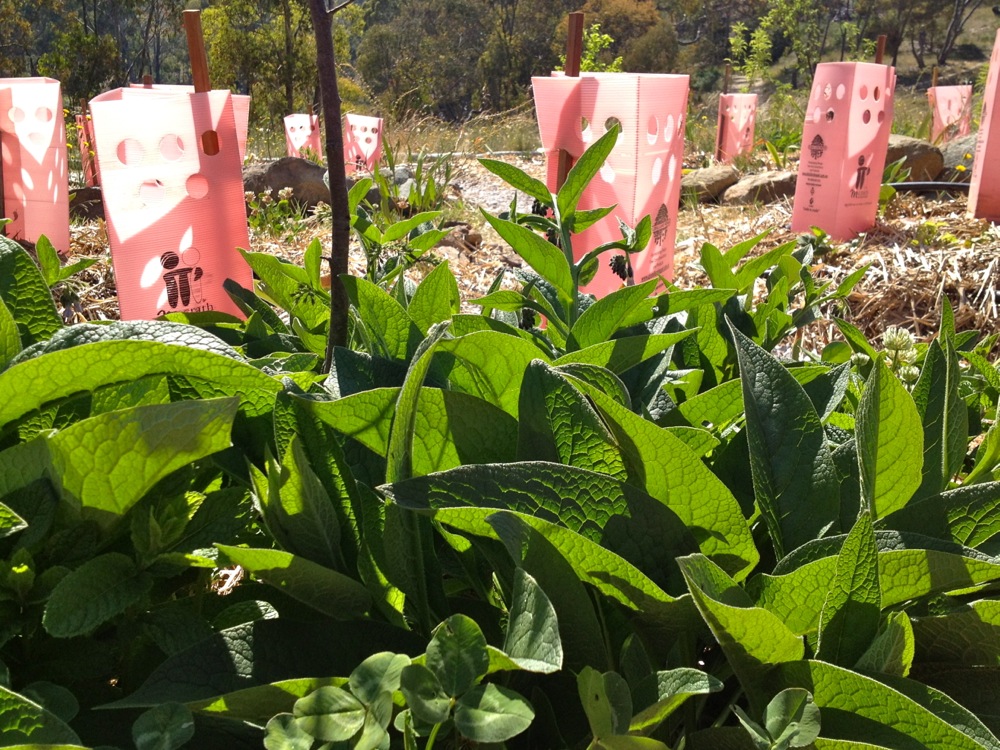
Our good friend comfrey. Un-killable, dynamic accumulator, soil de-compactor, bee forage and highly medicinal.
Big thanks to Harris, Minoru and Kellie, and all the Forest Garden Design students who made this garden happen.
Coming up in the new year we’re proud to be hosting Dave Jacke, primary author of the award winning Edible Forest Gardens for a Forest Garden Design Intensive at Milkwood Farm, which we expect will blow all our socks off. Can’t wait. More on that soon.


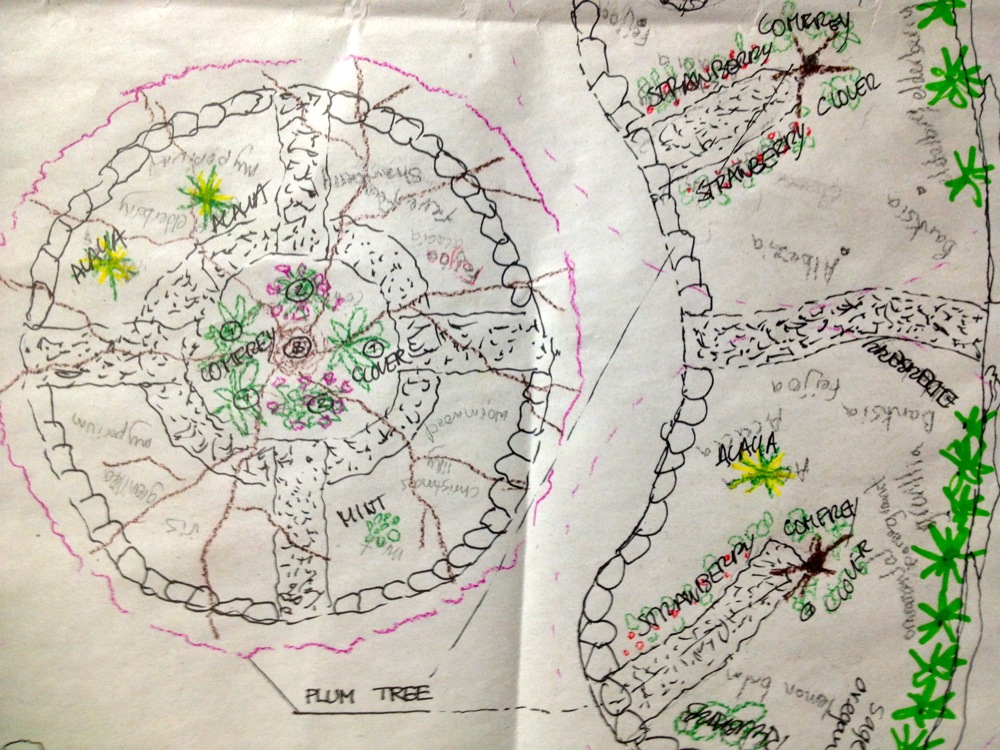
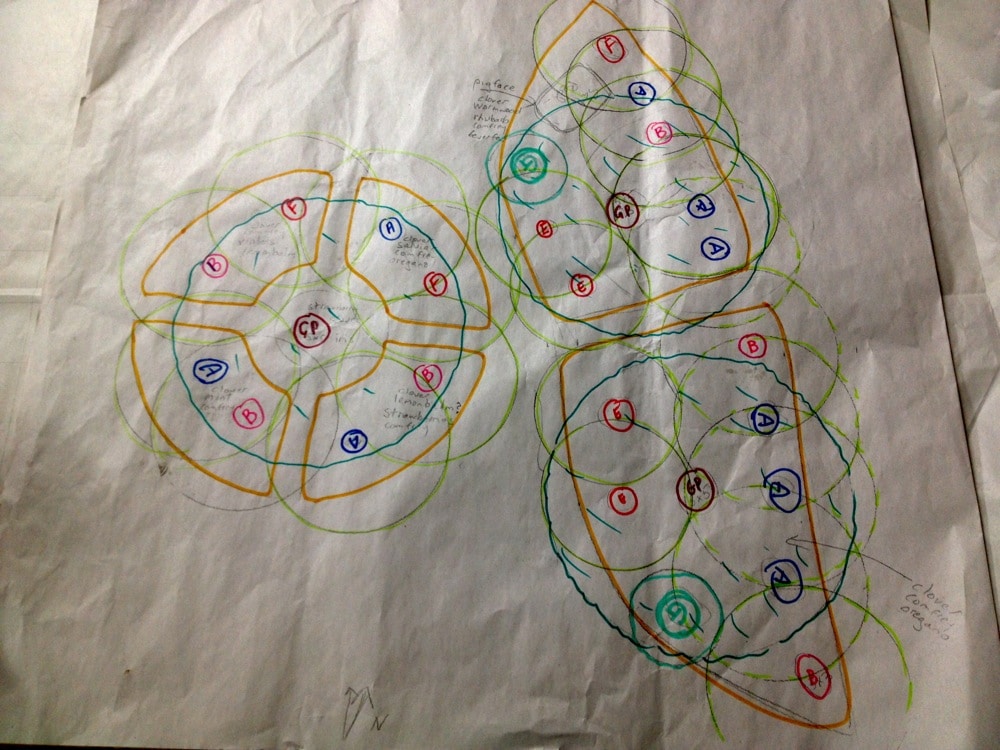










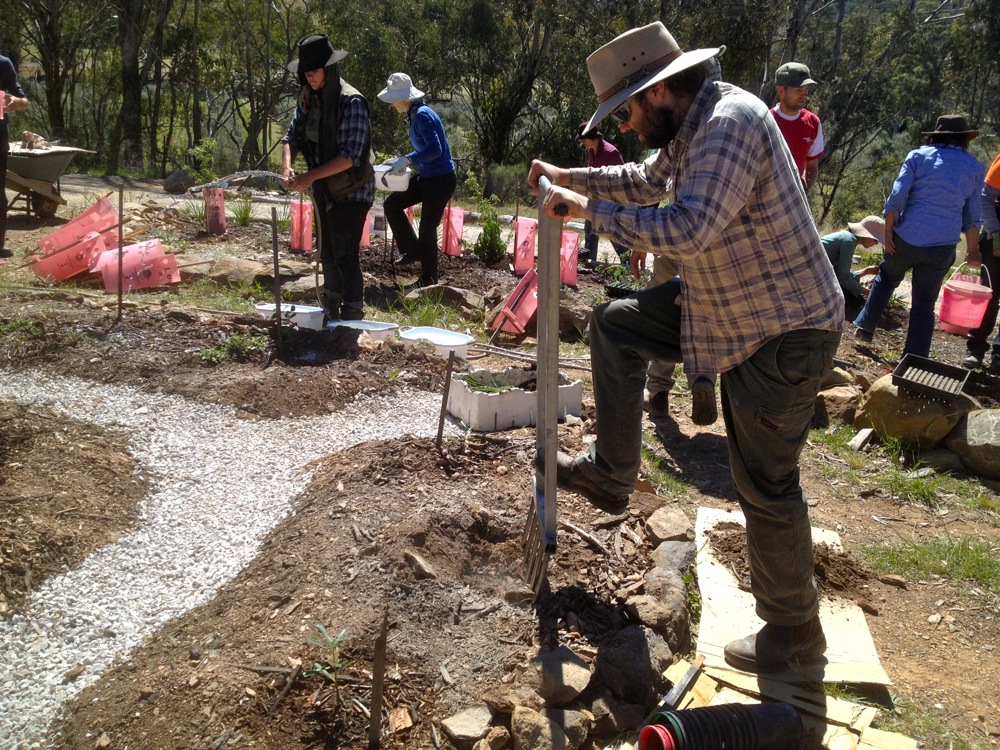





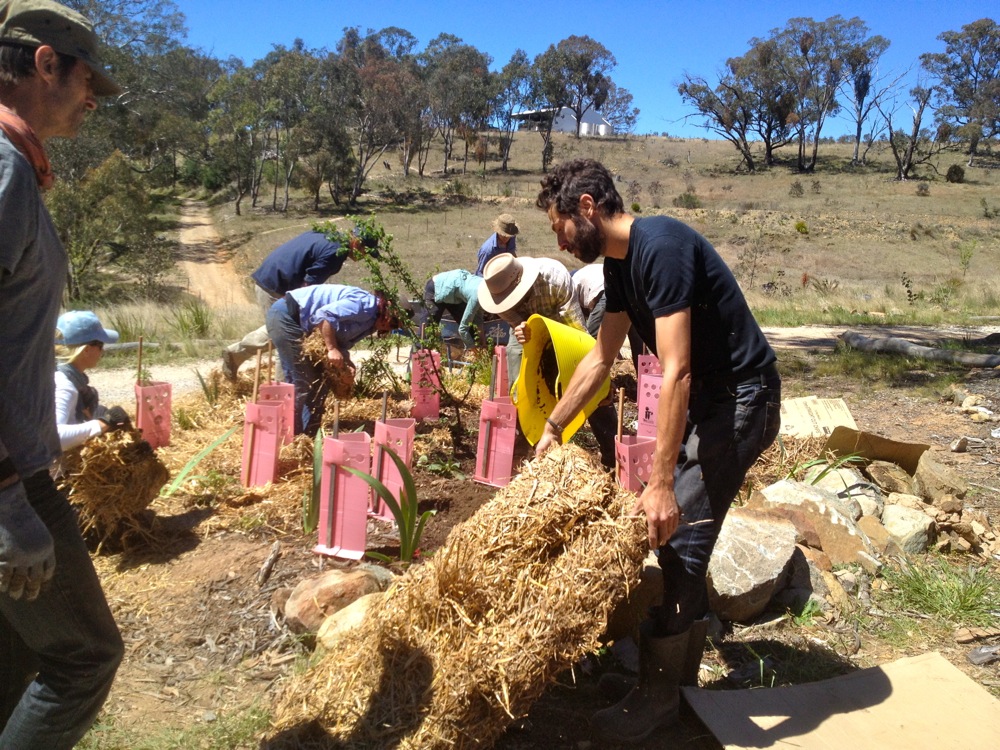
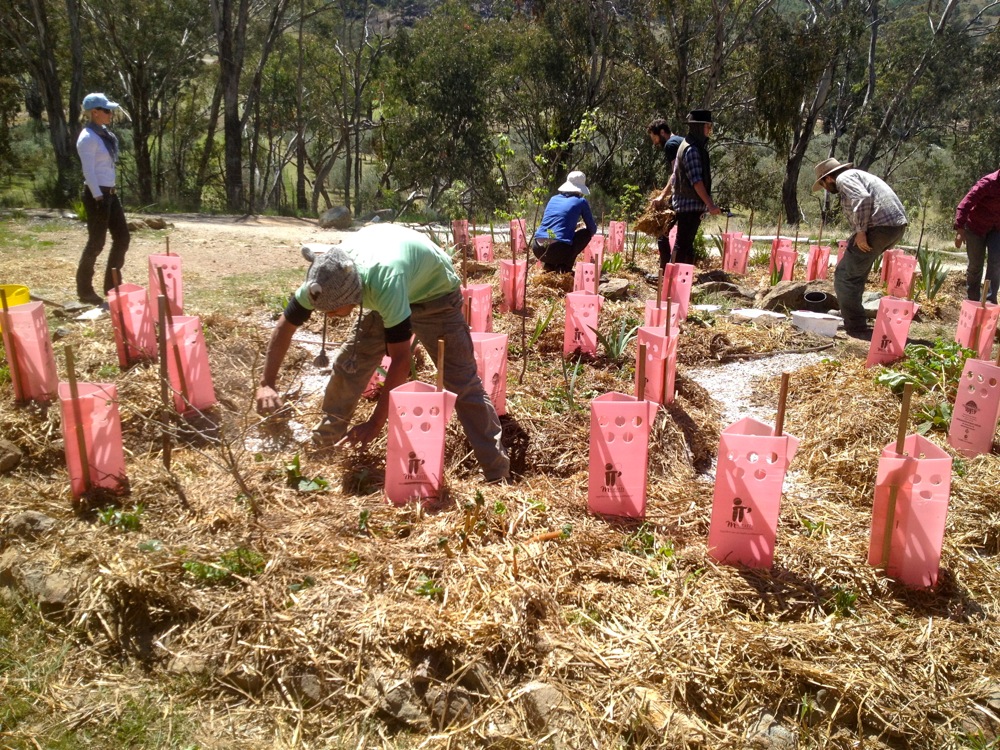















Wonderful work, its looking great!
looking forward to seeing the update pics as the months go by 🙂